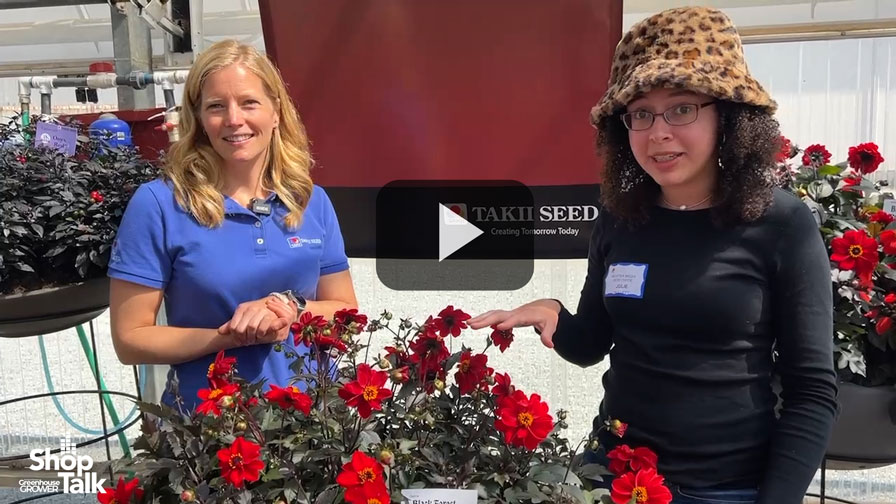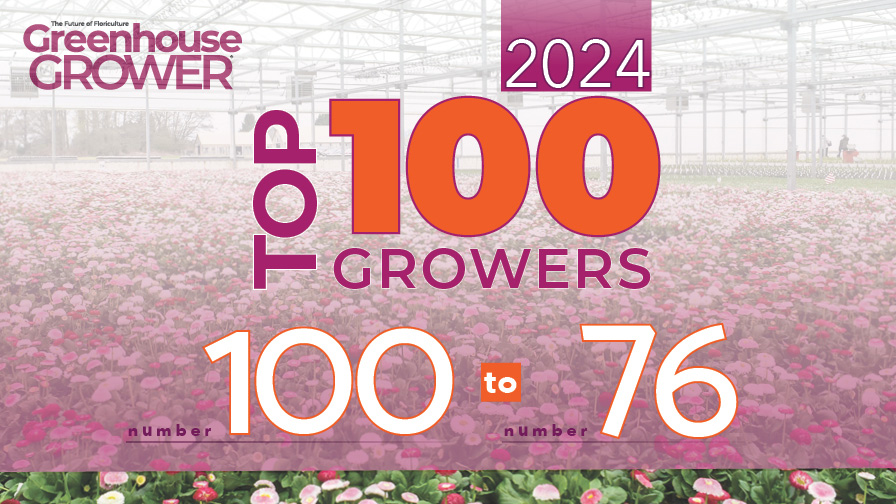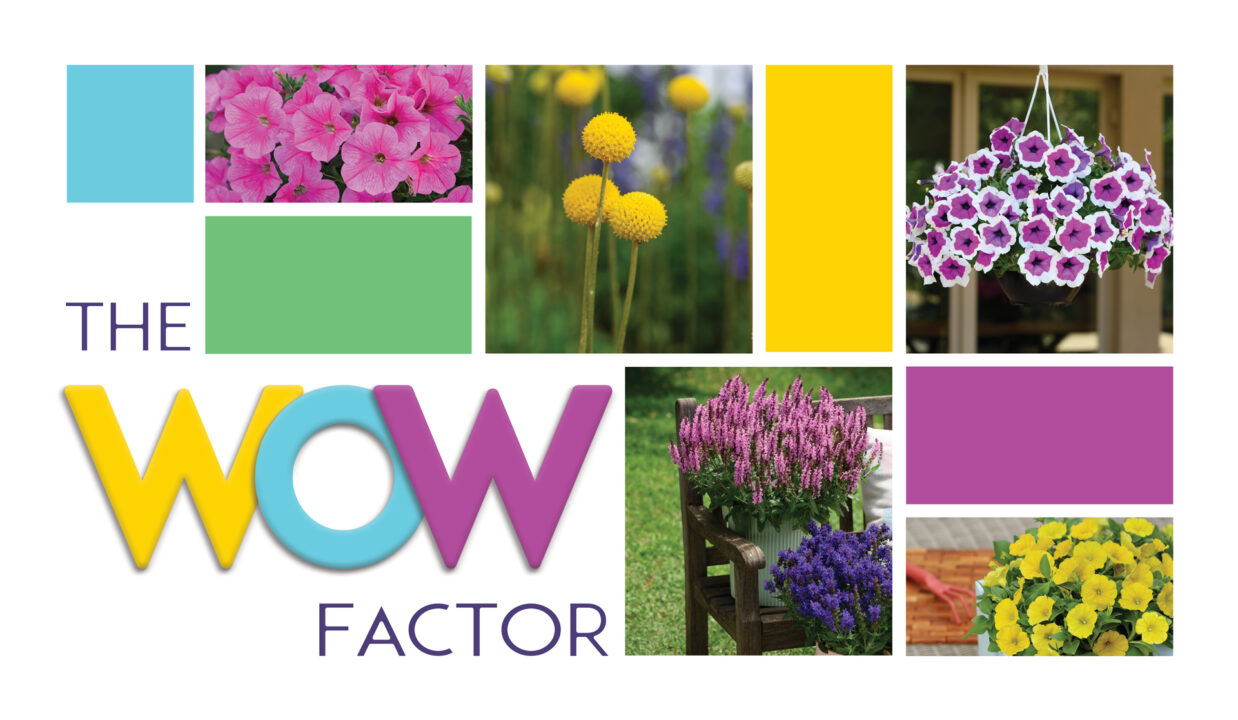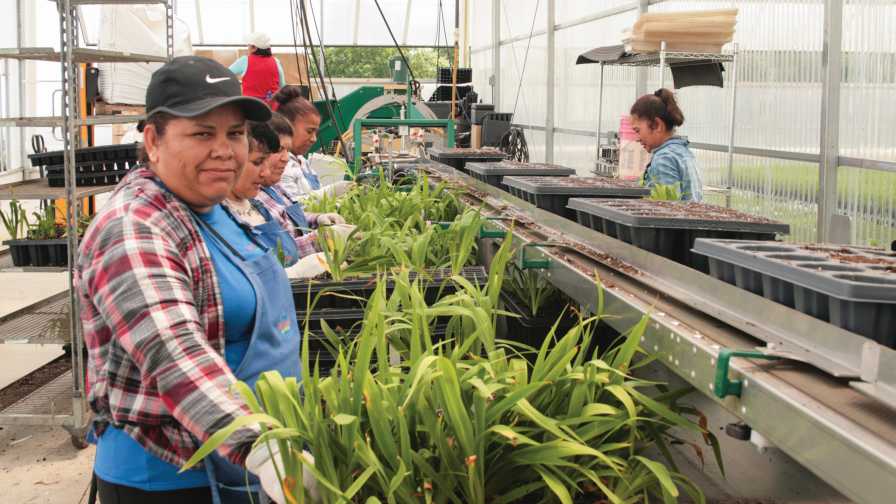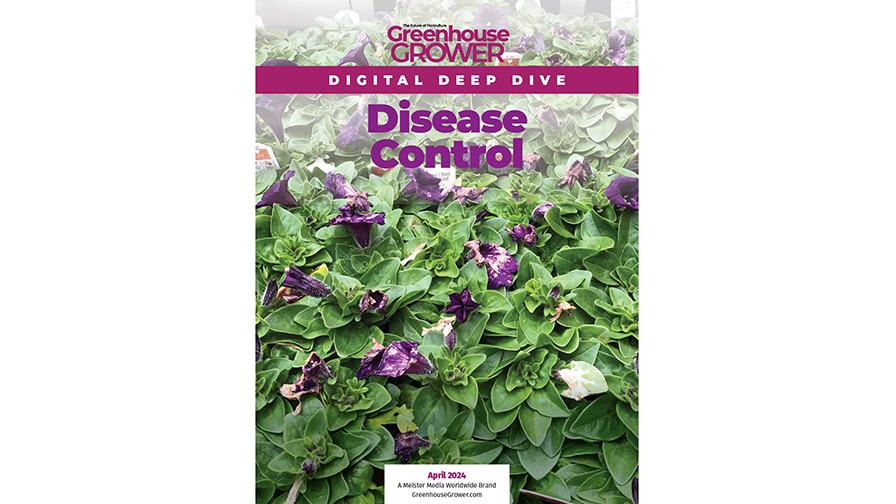The Basics of Effective Greenhouse Light Management
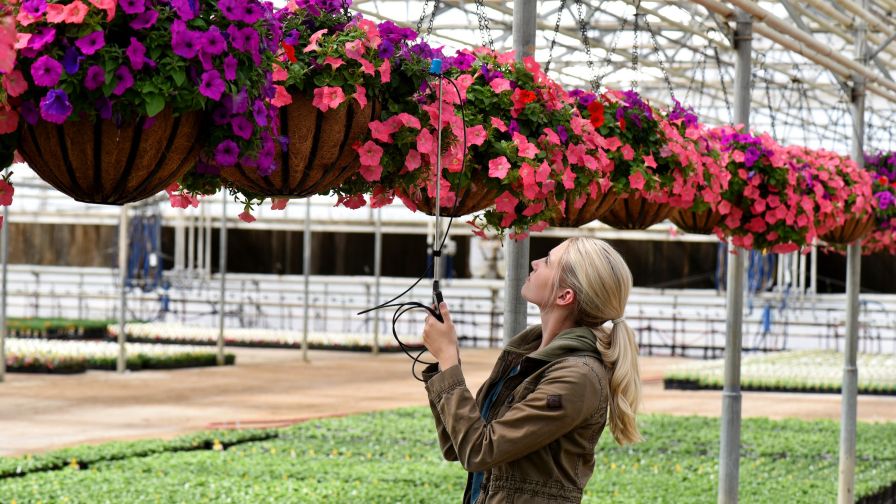
A student at Utah State University is measuring photon flux with an Apogee sensor on the end of a wand. Photo: Bruce Bugbee
Growers know that light and temperature are two critical factors for plant growth. The temperature in the greenhouse is constantly tracked and controlled, but do you know how much light your crop received yesterday?
“Among all the environmental variables that affect plant growth, light is the most underappreciated,” says Dr. Bruce Bugbee, Professor of Environmental Plant Physiology at Utah State University and President of Apogee Instruments. “People don’t measure it. Growers attribute poor plant growth to other factors.”
You probably wouldn’t purchase and use thousands of dollars of expensive fertilizers without some way to measure what concentrations you use. Yet, many operations spend tens of thousands of dollars on supplemental lighting — fixtures, controllers, and energy — without measuring any parameter of the light they’re supplying to their crops.
“If a grower is interested in maximizing their production and has or is considering using supplemental lighting, measuring light (either on a periodic or continuous basis) is almost certainly necessary,” says Dr. Timothy Shelford, Research Associate at Cornell University, Rutgers University, and Greenhouse Lighting and Systems Engineering (GLASE).
As humans, we are not reliable light meters. “If the lighting drops in half, the (plant) growth drops in half but you think nothing changed because our eyes are not good at perceiving light,” explains Bugbee. “Do you have a pH meter? That’s probably less important than a light meter.”
Many functions and parameters in the greenhouse are related to the amount of light available to the crop. You might not equate light measurement with root zone moisture management, but the two are related. The amount of light a plant receives affects how often it needs to be watered, explains Bugbee. “When light goes up, people tend to underwater. We tend to water the same on a sunny or a cloudy day, for example.”
“Light can also be a major source of heat in the greenhouse that needs to be moderated. In the summer months, shading systems can be controlled by the intensity of the light received,” says Shelford. “Similarly if a grower is paying for supplemental CO2, and there is little to no light, supplemental CO2 is not providing a benefit to the crop.”
Answering questions about lighting requires knowing how much and for how long. To measure that, use a tool called a quantum sensor. Sounds fancy. What’s a quantum? Let’s back up a bit.
Measuring the “Right” Light
Light is electromagnetic radiation, and therefore the amount of it striking a surface (leaf) can be measured. A photon is a small packet of energy that travels at the speed of light. Since we aren’t physicists, we can equate photons with light. More photons = more light. The number of photons that strike a surface depends on the source’s intensity and the distance from it.
As growers know, not all light is usable by plants. Photosynthetically Active Radiation (PAR) is the term for the portion of the light spectrum that plants use for photosynthesis. That’s the part we want to measure in the greenhouse.
Photosynthetic Photon Flux (PPF) is an instantaneous measurement. It changes with time. PPF readings show how much usable light the plant receives at that exact moment, but not a total. Daily Light Integral (DLI) is the amount of PPF accumulated over 24 hours and is much more helpful to growers for adjusting overall lighting recipes. If PPF is like the food on one forkful, DLI would be how much you ate all day. DLI can provide information on when and how much supplemental lighting to apply.
PPF is measured with a quantum sensor. Don’t use a foot-candle meter or lux meter. They typically measure all light, and we only want to measure PAR. Shelford explains, “Lux and foot-candles (FC) are also a measure of intensity, but it’s weighted for how humans perceive light, which is heavily in the green wavelength range (495 to 570 nm). Using a quantum sensor is particularly important if you’re using LED supplemental lighting where the wavelengths are typically a mix of red and blue. These wavelengths are not weighted very heavily with a lux or FC meter and you will under-measure the output of your lights.”
Light meters quickly pay for themselves in reduced operating costs and potentially increased revenue, whether from shorter crop cycle times or better quality plants and higher yields. Even a handheld quantum meter can provide valuable (enlightening?) data, especially if you’ve never delved into the subject before.
Lighting is not uniform in the greenhouse and, depending on your glazing, may vary widely across the grow space. Take samples in multiple locations at plant height to start developing the picture or map of your lighting situation.
Light Measurement Options
Measuring light, especially if you are paying to provide it, only makes sense. Handheld quantum meters are available from several suppliers and are inexpensive. Many offer the ability to leave them on for 24 hours and measure DLI.
“Tools are a lot better than they were even five to six years ago,” says Bugbee. “Get a DLI meter, that’s a big step. If you have LEDs, measuring DLI is essential.”
Modern systems can be used with an app on a smartphone. Quantum sensors hooked to data loggers or environmental control systems can significantly benefit the grower, providing records and inputs for action.
Lighting is a key part of production, but it doesn’t have to be costly.
At Costa Farms, hardwired sensors and handheld monitors are used in tandem. “Sensors often have to be mounted up, out of the way of booms and other items,” says Jeff Neese, Senior Tech Director of Horticulture at Costa Farms. While the sensors are connected to the environmental control computers, they often aren’t in the perfect location. “Make sure you’re measuring where the plant is,” he says. Where the plant is can change over time as a crop matures. Handheld sensors can measure at the leaf, providing a calibration factor for hardwired sensors at convenient but less-than-ideal locations.
“In a greenhouse situation where the light levels are variable from day to day and season to season it becomes more important to have a record of the daily light integral,” says Shelford. If you’re ready to step up your lighting game, he advises, “For short duration crops and anything with supplemental lighting, a hardwired light sensor integrated with a dynamic light controller is the way to go. You want the controller to be optimizing your crop light environment, so that you can focus on other aspects of production.”



